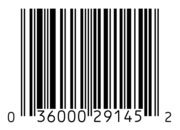|
UPC Code
The Universal Product Code is a unique code for each item manufactured and sold by a retail store, which a store or distributor usually includes in a data base which also has the item description, manufacturer, supplier, last price paid, quantity ordered, quantity on hand, retail price and other information associated with the product. The UPC code system was developed in the United States in 1973 by George J. Laurer, an IBM Engineer, along with the collective contributions of a group of grocery industry trade associations which formed the Uniform Grocery Product Code Council, consulting firm McKinsey & Company, and Ilhan Bilgutay who created the arrangement of bars of varying widths. UPC data structures are a component of Global Trade Item Numbers. All of these data structures follow the global GS1 standards. An International alternate code is the European Article Number (EAN) standard which is a superset of the original 12-digit Universal Product Code (UPC) system developed in North America, adding an extra digit to the beginning so that there would be plenty of numbers for the entire world. The EAN-13 barcode is defined by the standards organization GS1. It is also called a Japanese Article Number (JAN) in Japan. UPC, EAN, and JAN numbers are collectively called Global Trade Item Numbers (GTIN), though they can be expressed in different types of barcodes. Since most scanners and registers worldwide can read both equally, most manufacturers in North America still use UPC. Components of the UPC Code A standard UPC code consists of a six digit manufacturer identification number, followed by a five digit item number and a check digit:
Determining the Check Digit The check digit is calculated from the other 11 digits. As an example, using the code 63938200039 from "The Teenager's Guide to the Real World," the check digit is calculated by:
In this example, the check digit is therefore 3.
Entire web site copyright 2002-2008, DigitalNetExpress.com, Burbank, California. |



